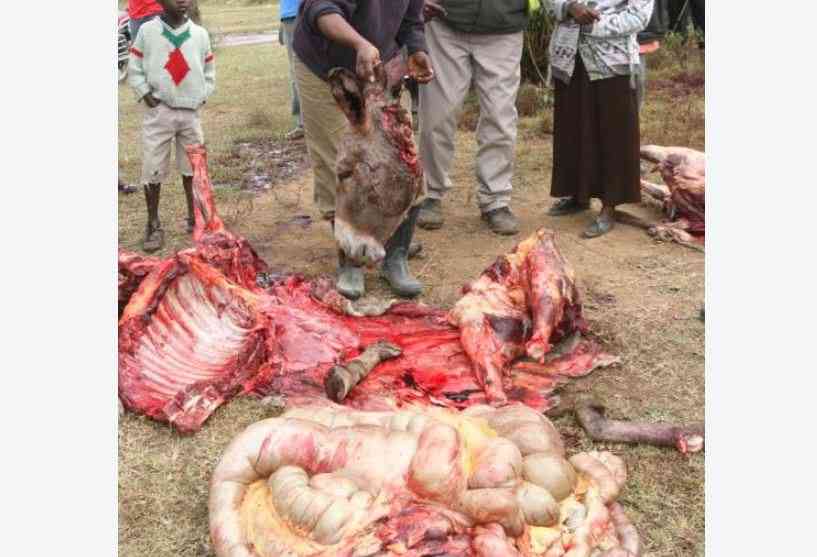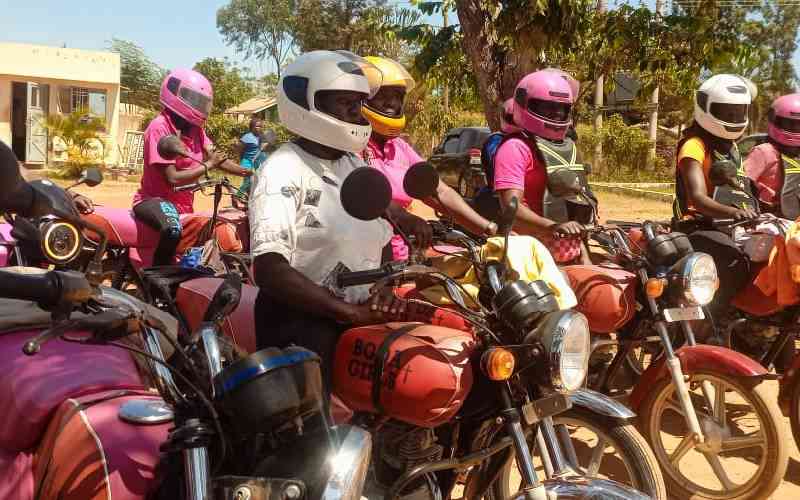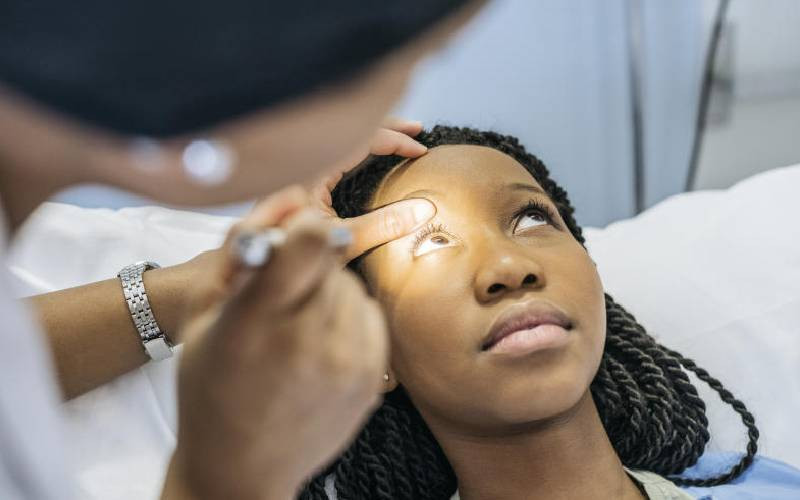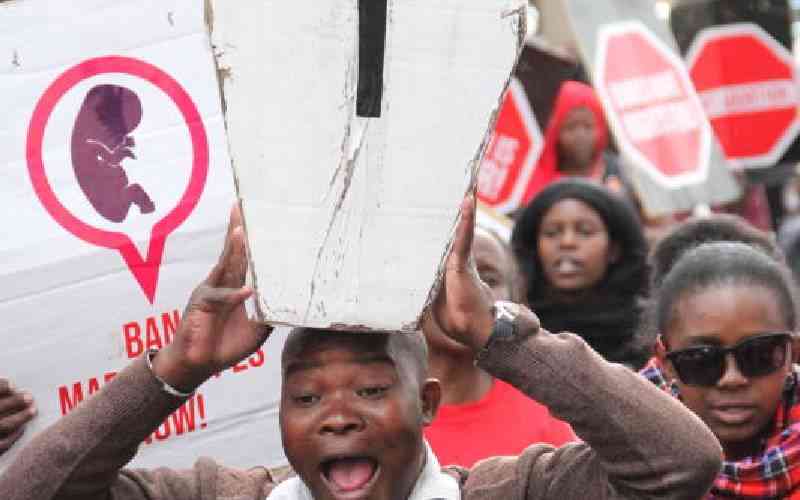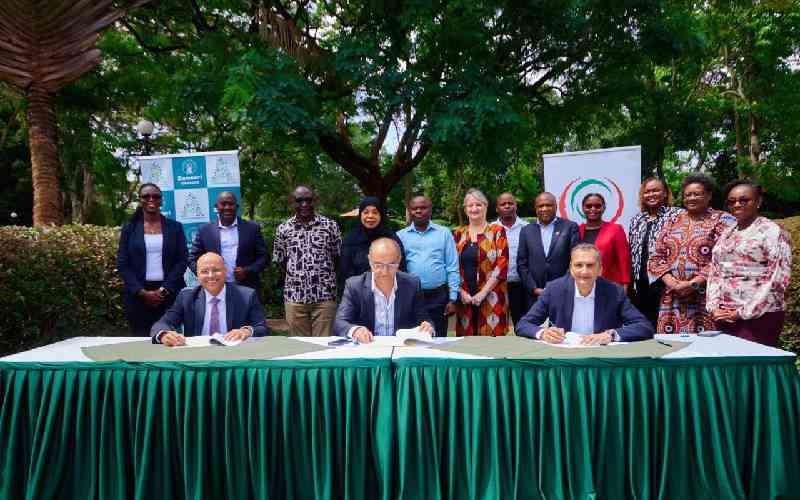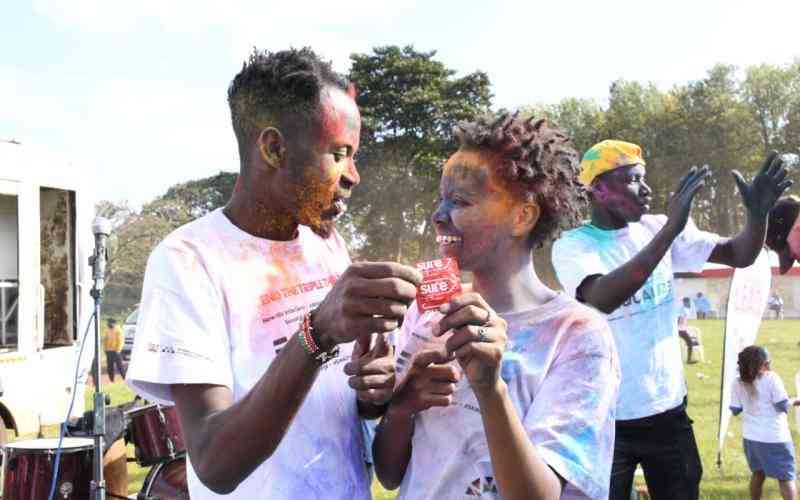
Barely four years to the set target of ending HIV infections in Kenya, infections in adolescents and young persons across the country are worrying.
The use of colour in campaigns has been adopted as a tool to sensitise adolescents on HIV prevention, testing and treatment.
The artistic work also helps tackle the stigma that hinders the fight against the pandemic.
Colour festival has been adopted by the National Sydnemic Disease Control Council (NSDCC) in partnership with the Meru County government to easily communicate with adolescents and young adults.
"Use of a ray of colours is more fun. It attracts and makes youth active," says Olivia Murunga, NSDCC, regional coordinator in Homa Bay and Migori counties.
Ahead of World AIDS Day, NSDCC held a Colour Festival event, which drew over 500 audiences from adolescents and young people between the ages of 15 to 30 years.
Speaking to The Standard during the festival, Murunga observes "I am convinced that it is easier to sell messages to the younger generation using artistic work,"

Among the colours are pink representing cancer, yellow (unsafe abortion), blue (sexual gender-based violence), red (HIV/AIDS) and purple which represents mental health.
Other colours used during the colour festival initiative are white which represents adherence, orange (lead champions for change) and maroon for people living with HIV.
As celebrations kick off, colours are displaced on a tray, and each picks their colour as per the area of interest which they paint on their faces.
The youth cheer each other during the painting, dance, sing and spray colour in the arena, challenging each other to spearhead sensitisation initiatives back in society.
During the initiative, various activities are conducted namely HIV testing services, condom distribution, and information dissemination through the peer-to-peer engagement model while sharing the minimum information package on HIV and Sexual gender-based violence.
Teenage pregnancies and mental health initiatives are also included during the festival.
"I am finding it easy learning about HIV using colours. Dances and songs also make sensitisation so interactive," says Jane Karemi, 18 years old.
Karemi also had a chance to undergo her first HIV testing in the fist.
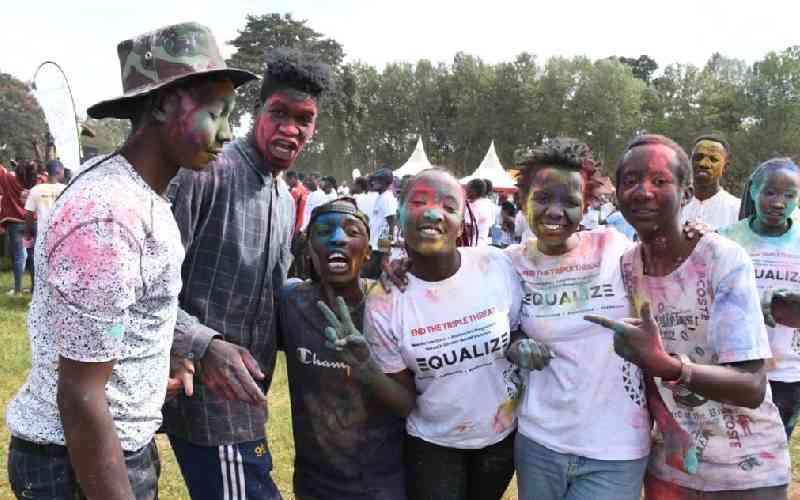
Initially, the Form Four leaver had a fear of the unknown.
"I am happy to have taken my first test, and more so being HIV negative," adds Karemi. "By knowing my status, I know how well to protect myself from contracting HIV/AIDS,"
According to Karemi, the stigma associated with HIV/AIDS makes youth hesitant to undergo tests.
The moment youth reveal their status, they face discrimination from society, which is killing more as compared to AIDS.
Hospitals also lack friendly youth services.
"Children and youth fear picking ARVS in hospitals, because they are easily discriminated by their peers whenever they notice they are HIV positive.
Several youths also are not comfortable being questioned by healthcare providers," adds Karemi.
"It is high time youth stands out and say HIV is real.
We also need to paint the picture of how to prevent early pregnancy by use of messaging that can easily resonate with us," observes the girl.
At least 41 per cent of new HIV infections occur among adolescents and young adults aged between 15 and 24 years.
The Colour Festival initiative is coordinated across the country through Maisha Youth, an umbrella under NSDCC.
Maisha Youth movement is a consultative forum for the youth under the National Syndemic Diseases Control Council.
The main goal of the Maisha Youth Organisation is to influence, inspire and empower young people to informed decisions that lead them to live healthy productive lives.
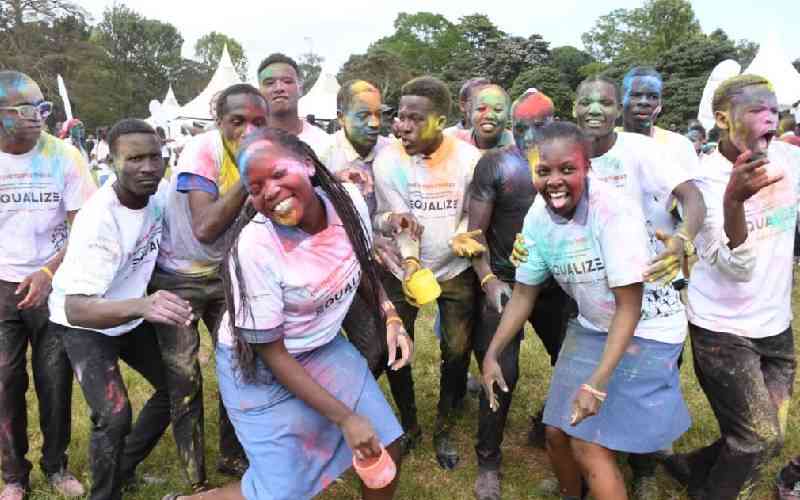
Ms Murunga, notes that the initiative works to inspire and empower young people to make informed decisions that lead them to live healthy productive lives and be the agents of change in their families, communities, and counties.
Additionally, it aims to place the adolescents and young people as a community of practice at the centre for decision-making using the Human-centred (HCD) rather than a public-private participatory approach aiming to innovatively reach out to the youth, to identify their challenges, prioritize and come up with innovative solutions.
The colour festival is aimed at reducing new HIV infections among adolescents and young people.
It is also key in reducing cases of teenage pregnancies and reduced incidences of sexual gender-based violence.
Currently, the initiative is ongoing in Meru, Turkana and Trans Nzoia counties.
It is held in partnership with the institution's student leadership.
The peers participating in the initiative be selected from the youth networks in the county and pre-trained on the minimum information by Maisha Youth County Champions.
Maisha youth county chairs identify the respective institution's student leadership, schedule a meeting with them and identify the possible best implementation strategies.
The student body also supports resource mobilisation and planning.
 The Standard Group Plc is a multi-media organization with investments in media
platforms spanning newspaper print
operations, television, radio broadcasting, digital and online services. The
Standard Group is recognized as a
leading multi-media house in Kenya with a key influence in matters of national
and international interest.
The Standard Group Plc is a multi-media organization with investments in media
platforms spanning newspaper print
operations, television, radio broadcasting, digital and online services. The
Standard Group is recognized as a
leading multi-media house in Kenya with a key influence in matters of national
and international interest.



